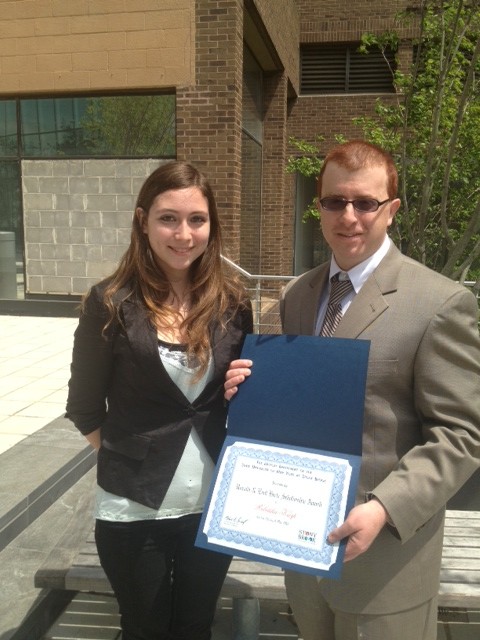|
|
|
How Retirement Plan Providers Can Avoid Having A "Communication Breakdown" With Their Clients
Because "happy" clients rarely leave.
 One of the most important jobs in having clients as a retirement plan provider is retaining them and the fact is that happy clients rarely leave. Too often, plan providers lose clients over a lack of communication. As Led Zeppelin said, "Communication Breakdown, it's always the same". This article is about how retirement plan providers can avoid a communication breakdown with their clients because a lack of communication with clients often turns them into former clients. One of the most important jobs in having clients as a retirement plan provider is retaining them and the fact is that happy clients rarely leave. Too often, plan providers lose clients over a lack of communication. As Led Zeppelin said, "Communication Breakdown, it's always the same". This article is about how retirement plan providers can avoid a communication breakdown with their clients because a lack of communication with clients often turns them into former clients.
To read the article, please click here.
|
|
The curious case about the one family fund lineup.
Fidelity being sued by a former employees for only using Fidelity funds in their 401(k) plan.
 You must know about the shoemakers' children and how they go barefoot and have no shoes. In the retirement plan industry, we have retirement plan providers and their employees' retirement plan. You must know about the shoemakers' children and how they go barefoot and have no shoes. In the retirement plan industry, we have retirement plan providers and their employees' retirement plan.
I know, I have been there. The third party administrator I worked for didn't have a great plan, it was often alleged we switched platforms to salvage our premier pricing with a certain insurance company.
So for me, it's no surprise that Fidelity is being sued by a former employee over their own 401(k) plan. While I don't know all the facts and it will be decided in the courts, one fact (if true) fascinates me.
I often waste time analyzing irrational behavior through rational eyes and I always ponder: "what were they thinking?" So when I hear that part of the complaint is that all of the mutual funds in the Fidelity plan were Fidelity funds, I ask: "what were they thinking?"
When you have thousands of mutual funds out there and hundreds of mutual fund companies, it's just amazing that any plan sponsor (whether it's a mutual fund company or not) thinks it's prudent that every fund on the plan's lineup is from the same mutual fund company. It doesn't look right and it doesn't look prudent, especially when there is no mutual fund company that has superior success in every sector of the market. In addition, any plan that only has funds from the same mutual fund company are often being administered by bundled providers who are mutual fund companies (i.e, plan being administered by T. Rowe Price with only T. Rowe Price funds). How is a plan sponsor able to offer a rational explanation that it was prudent to select mutual funds from one company? I don't think they can, especially when the mutual fund company is one of the plan providers.
Often in the retirement plan business, if it doesn't look right, there is usually something wrong. Any plan using the mutual funds from only one mutual fund company is a plan with something wrong.
|
|
|
�3(16) Plan Administration: The Next Big Thing?
A fit for some TPAs, not a good fit for others.
 What is often heralded as the next big thing often turns out to be a dud. I'm still waiting for Tim Leary to be the next Tom Seaver for my New York Mets. What is often heralded as the next big thing often turns out to be a dud. I'm still waiting for Tim Leary to be the next Tom Seaver for my New York Mets.
Well for many in the retirement plan business, the next big thing may be ERISA �3(16) fiduciary services, where someone (probably a third party administrator (TPA) or an affiliate) assumes the responsibility of administrator from the plan sponsor.
The "Plan Administrator" of a qualified retirement plan is defined in section 3(16) of ERISA. The Plan Administrator should not be confused with a "Pension Administrator" or a TPA.
Unlike the TPA, the Plan Administrator actually has the following primary responsibilities:
◦ Ensures all filings with the federal government (form 5500, etc.) are timely made;
◦ Makes important disclosures to plan participants;
◦ Hires plan service providers if no other fiduciary has that responsibility; and
◦ Fulfills other responsibilities as set forth in plan documents.
A TPA is delegated these responsibilities, but the plan sponsor bears the responsibility. The �3(16) fiduciary/administrator assumes that responsibility, as the plan sponsor outsources it.
So this is a great space for TPAs to be in just like �3(38) fiduciary services are a great space for registered investment advisors because it's just a notch (but a lot more liability) than what they are currently doing.
Again, it's not a right fit for every TPA and not the right fit for every plan sponsor client (especially those that handle their role as plan sponsor well).
Is it the next big thing? I think it's a great business because a year later, open multiple employer plans are pretty much dead and more plan sponsors want the opportunity to delegate some or most of their duties as plan fiduciary.
�3(16) administration is just another form of what is getting to be known as "401(k) outsourcing".
I think it's a growth spot for TPAs, especially for everyone who feels that fee disclosure is putting the squeeze on fees and profit margins
My good friends at DALBAR offers certification of those that want to be �3(16) administrators, I'm sure CEFEX probably does as well.
If you are a TPA interested in offering a �3(16) service, feel free to call (agreements for the service are at a flat fee). Even if you are not interested in offering yourself, but interested in partnering up with a non-TPA who offers it, give me a call as well. Sorry for the cheap plugs.
|
|
|
|
|
Life after fee disclosures.
Now what for plan providers?
 It was a great opportunity to speak in front of over 100 attendees at the Schwab National Conference in Scottsdale, AZ. The audience was primarily third party administrators and registered investment advisors. It was a great opportunity to speak in front of over 100 attendees at the Schwab National Conference in Scottsdale, AZ. The audience was primarily third party administrators and registered investment advisors.
The speech was about life after fee disclosure and some ideas that I had concerning how plan providers can compete in a post fee disclosure world.
I reiterated that even though plan providers got their fee disclosures out, now maybe an opportunity to review their fee disclosures for clarity and conciseness. The reason being that the Department of Labor is considering an additional guide of fee disclosures that plan providers may have to prepare, what I call "the guide to the guide of fee disclosures". In addition to maintain a competitive advantage, a more concise and clear disclosures of fees can help with your clients because I am convinced that confusing disclosures or too many pages of disclosures will create confusions and confused clients, often become former clients.
In addition, there needs to be further communications from plan providers to their clients on what they actually do. My wife jokingly tells people that she still doesn't know what I do for a living. At least, I think that's a joke. Too often plan sponsors don't understand what their plan providers do, so fee disclosures may make unwise plan provider changes based on price and not understanding that the savings in costs may also be accompanies by a decrease in quality and breadth of services. Plan providers needs to stress their value to their clients because when we talk about the fiduciary responsibility of only paying reasonable expenses, many plan sponsors forget the second half of the question "for the services provided." Plan sponsors can pay more to get more and if they don't understand that they get more in services, they maybe at a severe disadvantage if they make a change just on cost.
Once again, I am available for speaking engagements, far and wide including Bar Mitzvahs and First Communions (as long as those events are heavily attended by plan sponsors or plan professionals).
|
|
Sorry, Lois or how Plan Providers could better market their practice.
Tips on how to stand out among the crowd.
 I think the most important thing for any plan provider to survive and thrive in this business now after fee disclosure is about how to stand out among the crowd. What is your message? What is your value proposition? I think the most important thing for any plan provider to survive and thrive in this business now after fee disclosure is about how to stand out among the crowd. What is your message? What is your value proposition?
I always talk about my frustrating experience at a certain semi-prestigious Long Island law firm (sorry, Lois). I do it partly to rub my success in their noses because they never had faith in me, but mostly because the way I market myself now is the way I wanted to market myself back there. I could have been a star there, I could have been a contender, I could have been somebody, instead of the bum I became.
When I was there, I wanted to use Twitter, I wanted to use Facebook, and I wanted to constantly post articles and blog messages. The bureaucracy of the law firm wouldn't allow it. Social media was accused of the advertising committee of one of being barred by the legal advertising rules and I had a six-month wait on the publication of my articles because 3 partners had to approve my article before publication and the marketing department was bogged down in producing articles written by the law firm administrator that served no purpose other than his own. Since I'm constantly made comments about this abuse of resources, this law firm administrator's article output has been whittled to nothing.
My message was to offer an ERISA practice that would be available for the small to medium sized plans that thought they couldn't afford an ERISA attorney with fees on par with what the legal department at a TPA would charge, with the added benefit of an attorney-client relationship. My articles were going to try to help plan providers recruit and maintain clients, which would open a dialogue with these providers with the hopes I'd get clients through referrals by these providers. Since plan sponsors and plan providers were wary of the never ending possibility of being billed to death by the billable hour, I was going to charge a flat fee.
One of the ideas I had was that I was going to make a run at the clients of the old TPA I worked at. When I left that TPA, I was replaced by two attorneys and a paralegal (perhaps why a few TPAs have outsourced their legal department to my practice, cost effective is my middle name). So when my old TPA was charging $600 for the Section 415 amendment back in 2010, I was going to charge $300. Only problem is that the advertising committee wouldn't let me say $300. For some reason, I had to say I'd do it in a cost effective manner. After contacting 750 of my old clients, I think I got 1 through this approach. 5 years later, I still think what would have happened had I been able to use $300 in the solicitation letter.
So enough of my life story, I'll save it for the book. As any plan provider you need to find a message as to why anyone would hire you. Saying you're cheaper or how the other provider isn't going to cut it. If you are a financial advisor, the message is about offering a value, how your services will help a plan sponsor's retirement plan, minimize their liability, and improve the retirement outlook of the plan's participants. If you are a TPA, it's how you facilitate the plan's administration, eliminate the potential pitfalls of plan sponsor's fiduciary liability, and plan design that can help a plan sponsor maximize contributions to certain employees while making the required minimum contributions to the rank and file.
Like ERISA attorneys, plan providers are a dime a dozen. You need to stand out among the crowd and it's all about identifying a message that can help explain your services to potential clients and why you should be hired among the crowd. Hopefully, you'll have better luck in getting your message out that I did those years ago at that law firm.
|
|
Rebekkah Carp, Stony Brook Class of 2016.
 I am pleased and honored to announce that Rebekkah Karp, Stony Brook Class of 2016 is the winner of the inaugural Rozalia and Emil Berla Scholarship. I am pleased and honored to announce that Rebekkah Karp, Stony Brook Class of 2016 is the winner of the inaugural Rozalia and Emil Berla Scholarship.
I started The Rozalia and Emil Berla Memorial Scholarship Fund at my alma mater, Stony Brook University. This scholarship is named for the two greatest people I ever knew, my maternal grandparents who both survived the Holocaust.
Many of you in the retirement plan industry have contributed already and you have my thanks. If you can spare just a couple of bucks towards this worthwhile scholarship, I would greatly appreciate it.
$1,000 isn't much, but for a student attending such a great school, it's a substantial step in paying tuition.
You can donate online through this link. All you need to do to make sure the scholarship gets the money is to type "Berla" in the fund designation.
You can mail any contributions to
Send to Jane McArthur c/o College of Arts & Sciences, E3320 Melville Library, Stony Brook, New York 11794-3391. The Berla Scholarship should be noted on the memo line of your donation.
All gifts will be noted with a tax receipt.
Again I appreciate any help in raising money for such a good cause.
|

The Rosenbaum Law Firm Advisors Advantage, June 2013
Vol. 4 No. 6
The Rosenbaum Law Firm P.C. 734 Franklin Avenue, Suite 302
Garden City, New York 11530
516-594-1557 Fax 516-368-3780
Attorney Advertising. Prior results do not guarantee similar results. Copyright 2010, The Rosenbaum Law Firm P.C. All rights reserved. |
|
|
|
|
|
|
|
|
|